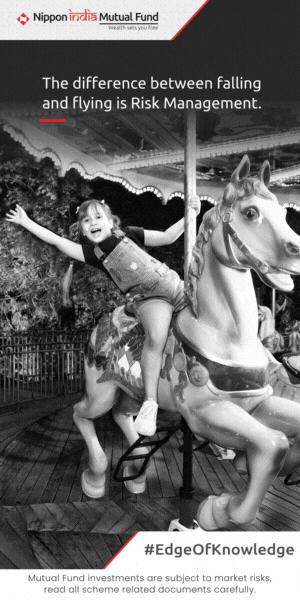What are Mutual Fund Balanced Advantage Funds

Balanced or hybrid funds is one of the fastest growing mutual fund product categories in India. As per AMFI data, in the last 3 years (period ending March 31, 2018) balanced fund AUM of the mutual fund industry grew at a compounded annual growth rate (CAGR) of 87%. Balanced or hybrid funds invest in both equity and debt asset classes. They are less risky than equity funds, but can give higher returns than debt. There are a large variety of hybrid funds with different risk characteristics ranging from moderately conservative to moderately aggressive. Some hybrid funds have up to 80% asset allocation in equities, while some have just 10 to 20% allocation in equities.
There are balanced funds, which follow a dynamic asset allocation strategy – in such a strategy the asset allocation (equity and debt) is rebalanced dynamically depending on the market conditions. If equity valuations are high, then fund decreases its asset allocation to equity / increases its asset allocation to debt and vice versa. Dynamic asset allocation lowers the risk profile of the fund – limits downside risk in volatile markets. The risk profiles of these funds are usually moderate to moderately aggressive. These balanced funds are also known as balanced advantage funds.
Balanced Advantage Fund
With this background, let us now discuss about Balanced Advantage Funds. As discussed earlier, Balanced Advantage Funds follow a dynamic asset allocation strategy based on a valuation linked asset allocation model. Balanced Advantage Funds rebalance their asset allocation (from equity to debt or vice versa) based on some valuation metric like Price to Earnings, Price to Book etc. If valuations are high, then asset allocation to debt is increased and vice versa, if valuations are low. As such, these funds are like contra funds. In bull markets, which are usually momentum driven, these funds reduce their asset allocation to equities and therefore, these funds may underperform compared to aggressive balanced funds. In volatile markets, corrections, bear markets etc, these funds outperform aggressive balanced funds and limit the downside risk to the investors.
Essentially, these funds follow the age old investing wisdom of buying low and selling high. Therefore, in the long term, these funds can deliver very good risk adjusted returns to investors. Based on what we have seen over the last few years, the Balanced Advantage funds in the market deploy a slightly conservative strategy with respect to asset allocation – they usually maintain a certain minimum level of debt allocation, which is more conservative than aggressive balanced funds. Therefore, these funds are suitable for investors with moderate risk appetites. Also, unlike aggressive balanced funds, which are mostly oriented to capital appreciation objective, balanced advantage funds try to ensure dual objectives of income generation and capital appreciation – hence also suitable for investors who have the same two objectives.
Balanced Advantage Fund Taxation
Balanced Advantage Funds enjoy equity taxation – will discuss how these funds ensure equity taxation later in this post. Short term capital gains (investment held for less than 12 months) are taxed at 15% plus applicable cess. Long term capital gains (investment held for more than 12 months) of up to Rs 1 Lakh is completely tax free. Long term capital gains in excess of Rs 1 Lakh are taxed at 10% plus applicable cess. If you have already invested in one or more Balanced Advantage Funds before January 31st 2018, then please note that long term capital gains till January 31st 2018 will be grandfathered – this means that, irrespective of your purchase price (NAV), for the purpose of long term capital gains tax calculations, the NAV prevailing on January 31st 2018 will be taken as the purchase price and long term capital gains will be calculated accordingly. Dividends paid by Balanced Advantage Funds are tax free in the hands of the investors, but the Asset Management Company will have to pay 10% Dividend Distribution Tax (DDT) before paying dividends to investors. The tax advantage enjoyed by Balanced Advantage Funds gives these schemes an edge over the other investment products for long term investors.
How Balanced Advantage Funds work?
As discussed earlier, the asset allocation (equity and debt) of balanced advantage funds are dynamic based on market conditions (valuations). Some balanced advantage funds use Price to Earnings of Price to Book of Nifty / other indices to determine asset allocation based on a specific mathematical model developed by the AMC. Some balanced advantage funds yield gap, difference between earnings yield of Nifty / other indices and yield of Government bonds (e.g. the 10 year bond), to determine asset allocation. Earnings yield of Nifty is essentially the reciprocal of Nifty valuation (P/E) and therefore, even the yield gap model is valuation based. There can be other variants of dynamic asset allocation strategies. The active equity exposure as per dynamic asset allocation models can range from 30% to 80%, depending on prevailing market conditions.
How do balanced advantage funds ensure equity taxation even when the model suggests low equity exposure? The net equity exposure of balanced advantage is reduced not only by shifting allocation to debt (up to maximum 35%), but also through hedging using derivatives. Hedging through derivatives allows the funds to have minimum gross equity exposure of 65%, while reducing risk at the same time. Further, hedging also enables the fund to generate arbitrage (risk free) income which can supplement the income from debt securities.
Difference between Balanced Advantage Fund and Aggressive Balanced Funds
Aggressive Balanced Funds have between 65% and 80% of their asset allocation in un-hedged (active) equity – the remaining part of asset allocation is in debt instruments. Depending on market conditions, the active equity allocation of balanced advantage funds can be much less than aggressive balanced funds. Therefore, the risk profile of balanced advantage funds is more moderate than aggressive balanced funds. However, both Aggressive Balanced Funds and Balanced Advantage funds enjoy equity taxation.
You may like to read more about Balanced Funds now known as Aggressive Hybrid Funds
Difference between Balanced Advantage Fund and Equity Savings Fund
Some readers may want to ask, how are balanced advantage funds different from equity savings funds? It is a good question because there are many similarities. Let us first talk briefly about equity savings funds. From 2014 onwards, a new type of balanced or hybrid funds was launched by several AMCs. The generic name of this type of funds was equity savings funds. These funds invested in equity, debt and derivatives. The active (un-hedged) equity exposures of equity savings funds do not exceed 50%. Derivatives are used to hedge a portion of the equity exposure and also to generate arbitrage income, while ensuring equity taxation because stock or index derivatives are treated as equity related securities for tax purposes. The risk profiles of these funds are usually moderate to moderately aggressive.
A related read – Are Equity Savings Funds suitable alternative for fixed deposits
Equity savings funds also use hedging / derivatives to reduce the active (net) equity exposure and risk, while ensuring equity taxation. The primary difference between the two is the fundamental strategy of the fund – balanced advantage funds use dynamic asset allocation models, while equity savings funds usually have mandated asset allocation ranges (minimum and maximum) for active equity, arbitrage and debt. The maximum active exposure of equity savings funds will typically be less than that suggested by the most favorable scenario for equity as per dynamic asset allocation model. SEBI guidelines also require equity savings funds to state their minimum active (net) and hedged equity exposure in their scheme information documents.
Conclusion
In this blog post, we discussed about different types of hybrid funds, their asset allocation profiles and risk characteristics, with emphasis on balanced advantage funds. Investors should understand the risk characteristics of the scheme and ensure it is aligned with their risk capacities before investing. If in doubt, investors should consult with their financial advisors to understand if balanced advantage funds are suitable for their investment needs.
Mutual Fund Investments are subject to market risk, read all scheme related documents carefully.
RECOMMENDED READS
LATEST ARTICLES
- Importance of having exposure to commodities in the portfolio
- How to select the right index funds for your portfolio
- Why you need to have large cap mutual funds in your portfolio
- Why invest in Flexicap mutual funds
- Why should one consider Gold as a part of portfolio considering their prices in the current situation
The information being provided under this section 'Investor Education' is for the sole purpose of creating awareness about Mutual Funds and for their understanding, in general. The views being expressed only constitute opinions and therefore cannot be considered as guidelines, recommendations or as a professional guide for the readers. Before making any investments, the readers are advised to seek independent professional advice, verify the contents in order to arrive at an informed investment decision.
Mutual Fund investments are subject to market risks, read all scheme related documents carefully.
Quick Links
Follow Nippon India MF
More About Nippon India MF
POST A QUERY





